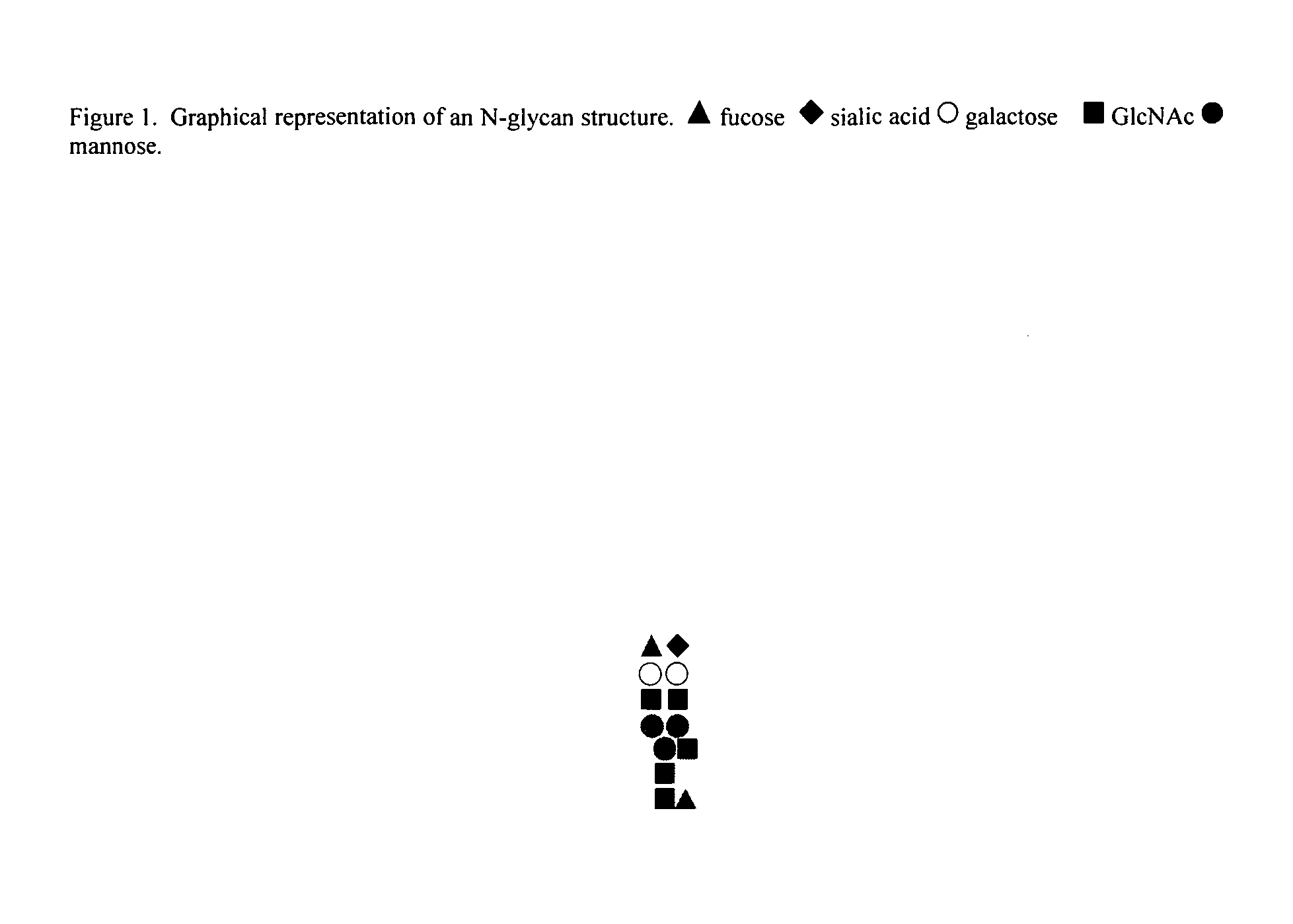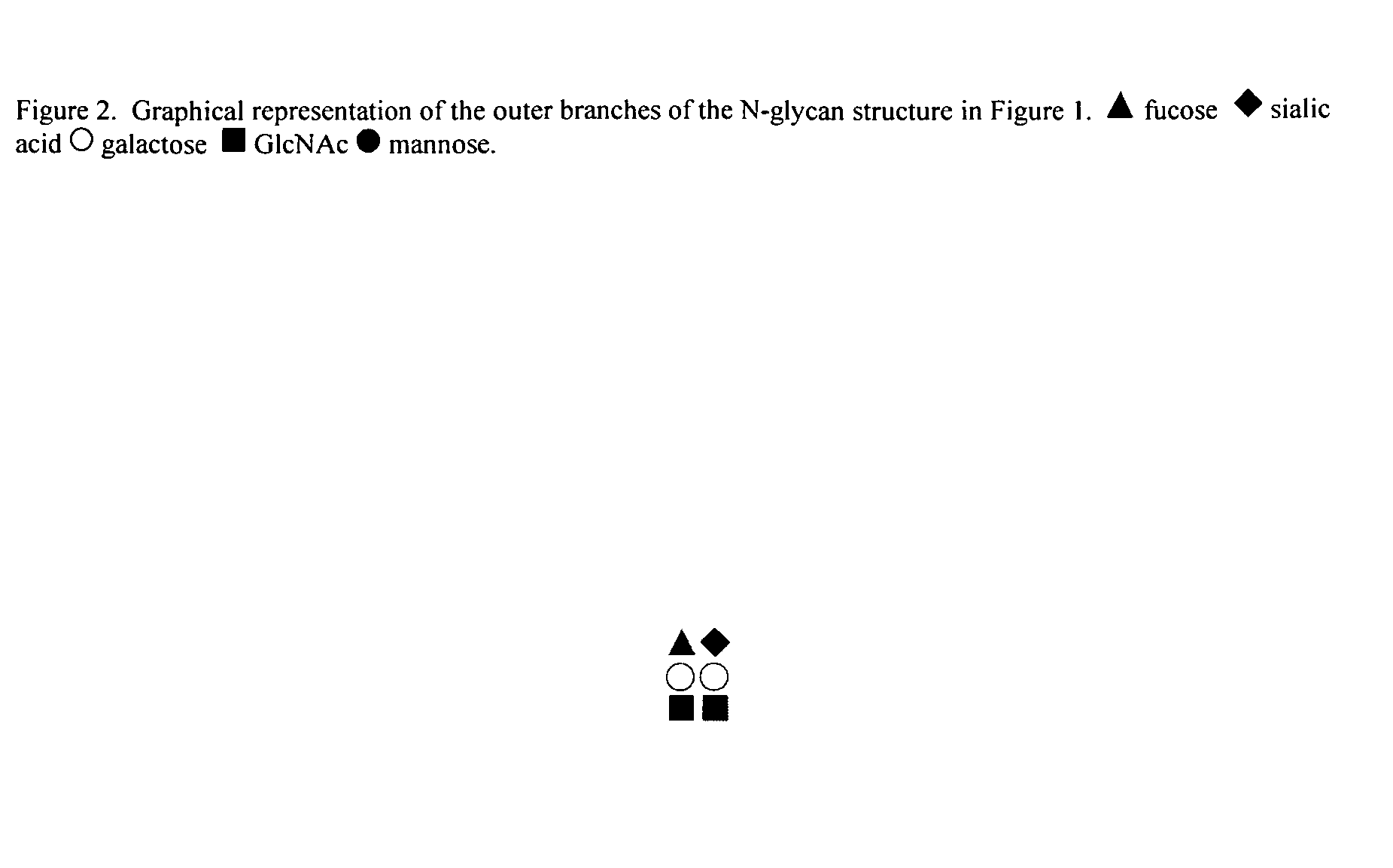In silico generation of asparagine-linked glycan structure databases and use of such
a technology of glycan structure and database, which is applied in the field of determination of glycan structure linked to asparagine residues, can solve the problems of high labor intensity, slow and costly manual curation of n-glycan structure from published data, and high labor intensity of these techniques, so as to achieve speed and flexibility, high throughput, and minimum cost
- Summary
- Abstract
- Description
- Claims
- Application Information
AI Technical Summary
Benefits of technology
Problems solved by technology
Method used
Image
Examples
example # 1
Example #1
[0067]FIG. 13 shows the output of the computer program for one of the N-glycan structures found on the peptide, “NEEYNK”, from human alpha-1-acid glycoprotein. The raw mass spectrometric data was downloaded from the open proteomics database at http: / / bioinformatics.icmb.utexas.edu / OPD. The sample contained 75 pmol of human alpha-1-acid glycoprotein digested with trypsin. Peptides and glycopeptides were separated by a C18 column using a reverse phase elution of 140 min and a final acetonitrile concentration of 65%. The mass spectrometer used was an LCQ (ThermoFisher Scientific, San Jose, Calif., USA) with positive electrospray ionization and collision induced dissociation.
[0068]The amino acid sequence of the peptide, “NEEYNK”, is the sequence from Residue 52 to Residue 57 in the amino acid sequence listing as shown in the paper copy of the Sequence Listing and in the Sequence Listing in the file “SequenceListing1_JianMinRen” in the compact disc included in this application....
PUM
| Property | Measurement | Unit |
|---|---|---|
| average molecular mass | aaaaa | aaaaa |
| mass | aaaaa | aaaaa |
| structure | aaaaa | aaaaa |
Abstract
Description
Claims
Application Information
 Login to View More
Login to View More - R&D
- Intellectual Property
- Life Sciences
- Materials
- Tech Scout
- Unparalleled Data Quality
- Higher Quality Content
- 60% Fewer Hallucinations
Browse by: Latest US Patents, China's latest patents, Technical Efficacy Thesaurus, Application Domain, Technology Topic, Popular Technical Reports.
© 2025 PatSnap. All rights reserved.Legal|Privacy policy|Modern Slavery Act Transparency Statement|Sitemap|About US| Contact US: help@patsnap.com



